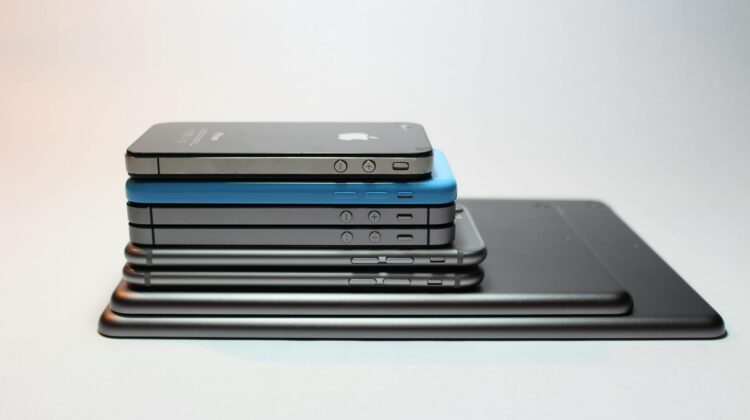
Best Smartphones: AI Features, Battery Life, and Value for Money Compared
Introduction: Why Choosing the Right Smartphone Matters
In 2025, smartphones are no longer just communication devices—they are personal assistants, productivity tools, entertainment hubs, and even health monitors. With brands like Apple, Samsung, Google, and OnePlus competing to add advanced artificial intelligence (AI) features, improved battery performance, and value-driven pricing, choosing the right smartphone has become a challenge. For anyone reading Tech Reviews, this guide will compare the best options to help you make an informed decision.
AI Features: Smarter Phones for Smarter Lives
Artificial intelligence is now at the heart of the smartphone experience. Today’s leading models use AI not only for photography but also for system optimization, security, and daily assistance.
- Apple iPhone 16 Pro – Apple’s A18 Pro chip is designed with AI acceleration, improving Siri’s contextual understanding and camera scene recognition. It even auto-adjusts performance based on your habits.
- Google Pixel 9 Pro – A standout in AI, the Pixel series integrates AI deeply into Google Assistant, real-time translation, photo unblurring, and voice-to-text with near-human accuracy.
- Samsung Galaxy S25 Ultra – Samsung has introduced Galaxy AI, which enhances multitasking, note summarization, and real-time language conversion during calls.
- OnePlus 13 – OnePlus integrates AI into battery health monitoring and adaptive refresh rate, keeping performance high without draining power.
AI isn’t just a feature anymore; it’s becoming the backbone of the smartphone experience, and for many users, this is a top reason to upgrade.
Battery Life: Endurance Meets Efficiency
Battery life remains one of the most important factors for smartphone buyers. Even with AI enhancements, performance means little if the phone can’t last through the day.
- iPhone 16 Pro – Improved battery efficiency offers up to 20 hours of video playback, but heavy gaming or 5G usage still drains faster.
- Pixel 9 Pro – While slightly smaller in battery size, Google optimizes with Adaptive Battery AI, learning your usage to prioritize apps you use most.
- Galaxy S25 Ultra – Known for power endurance, the S25 Ultra boasts a 5,500 mAh battery, easily lasting over a day and a half with moderate usage.
- OnePlus 13 – OnePlus continues to shine with ultra-fast charging. The 150W SuperVOOC charging system powers the device from 0% to 100% in under 20 minutes, which is a major selling point for on-the-go users.
From daily work to travel, the balance of battery size, optimization, and charging speed makes a significant difference in overall usability.
Value for Money: Balancing Price and Performance
Not everyone wants to spend $1,200 or more on a flagship phone, which is why value for money is now a key differentiator in Tech Reviews.
- Apple iPhone 16 Pro – Starting at $1,099, it’s undeniably expensive, but for loyal Apple users, the ecosystem integration justifies the cost.
- Google Pixel 9 Pro – At around $899, it offers one of the best balances between price and innovation, especially with Google’s AI-first approach.
- Samsung Galaxy S25 Ultra – The Ultra model sits at the higher end ($1,299+), but its performance, battery, and camera features attract power users.
- OnePlus 13 – Priced at $749, it undercuts competitors while delivering flagship-level performance, fast charging, and strong AI integration—making it the best value pick.
For budget-conscious buyers, OnePlus continues to lead the value-for-money category, while Pixel stands out for those prioritizing AI features without overspending.
Camera AI: A Quick Look at Photography Performance
Photography is one of the most AI-driven features in smartphones today.
- iPhone 16 Pro – Cinematic Mode and ProRAW with AI adjustments make it ideal for creators.
- Pixel 9 Pro – Google dominates computational photography, especially in low-light and motion shots.
- Galaxy S25 Ultra – With its 200MP primary sensor enhanced by AI stabilization, Samsung is the best choice for professional-grade photography.
- OnePlus 13 – While not as advanced as Samsung or Pixel, its Hasselblad partnership ensures natural colors and impressive detail.
Photography-driven buyers will likely lean toward Samsung or Google, but Apple’s ecosystem makes editing and sharing seamless.
Expert Opinion: Where the Market is Headed
According to tech analysts, AI integration will dominate smartphone development for the next five years. Phones will shift from being simple tools to becoming context-aware devices capable of predicting user needs. Battery innovation is also expected to accelerate, with graphene and solid-state technology already in experimental phases. The focus on value for money, especially with global inflation and shifting consumer priorities, will make mid-tier flagship killers more appealing.
Conclusion: Which Smartphone Should You Buy?
When comparing the best smartphones of 2025, it all comes down to your priorities.
- If you value ecosystem and reliability, the iPhone 16 Pro remains a safe bet.
- For AI innovation and smart features, the Pixel 9 Pro is unmatched.
- If you want powerhouse performance with endurance, the Galaxy S25 Ultra is hard to beat.
- For those prioritizing value for money, the OnePlus 13 delivers flagship features at a lower cost.
In short, the “best” smartphone depends on whether you prioritize AI, battery life, or price. The good news is that in 2025, every major brand has made strides in all three areas—ensuring you can find the right fit for your lifestyle and budget.







